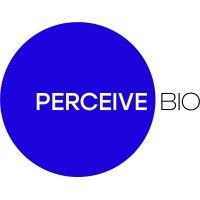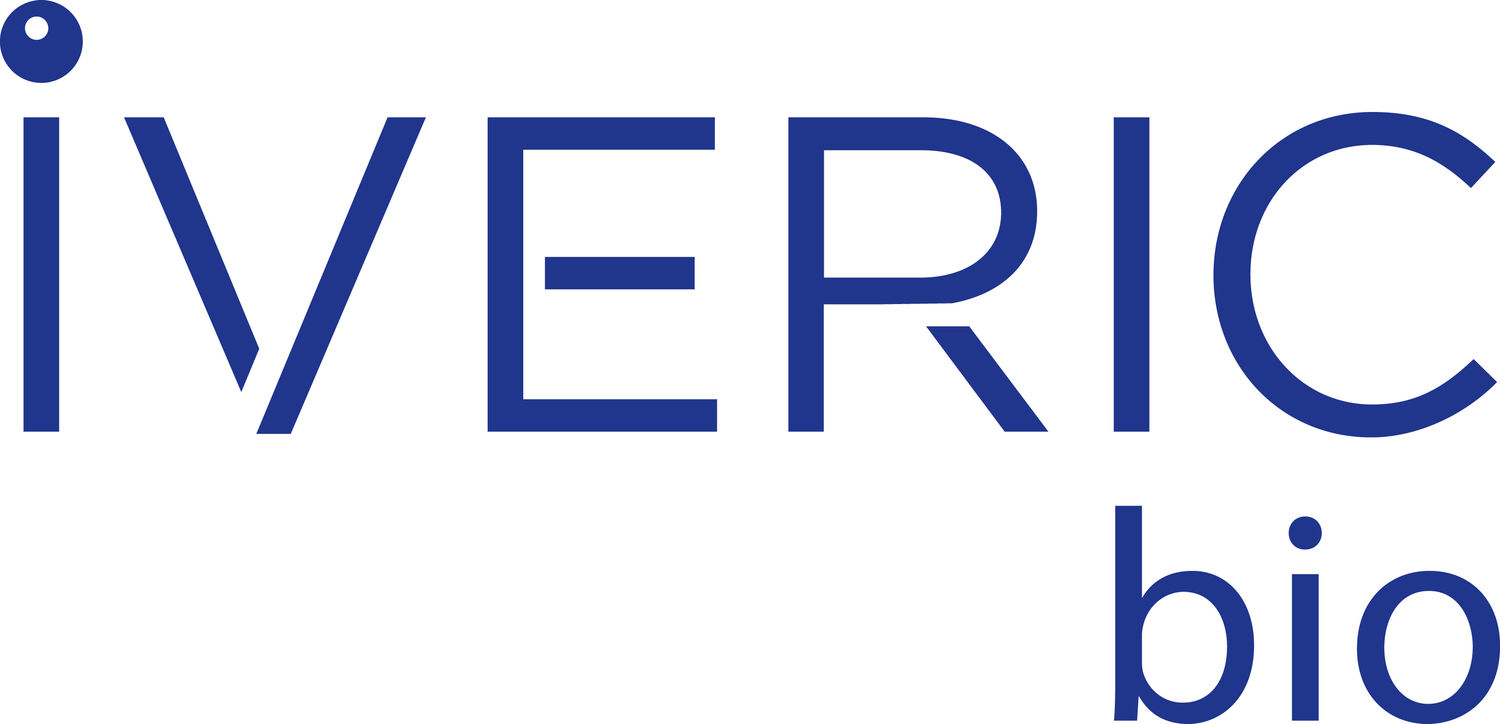预约演示
更新于:2025-05-07
HTRA1
更新于:2025-05-07
基本信息
别名 ARMD7、High-temperature requirement A serine peptidase 1、HtrA + [7] |
简介 Serine protease with a variety of targets, including extracellular matrix proteins such as fibronectin. HTRA1-generated fibronectin fragments further induce synovial cells to up-regulate MMP1 and MMP3 production. May also degrade proteoglycans, such as aggrecan, decorin and fibromodulin. Through cleavage of proteoglycans, may release soluble FGF-glycosaminoglycan complexes that promote the range and intensity of FGF signals in the extracellular space. Regulates the availability of insulin-like growth factors (IGFs) by cleaving IGF-binding proteins. Inhibits signaling mediated by TGF-beta family members. This activity requires the integrity of the catalytic site, although it is unclear whether TGF-beta proteins are themselves degraded. By acting on TGF-beta signaling, may regulate many physiological processes, including retinal angiogenesis and neuronal survival and maturation during development. Intracellularly, degrades TSC2, leading to the activation of TSC2 downstream targets. |
关联
8
项与 HTRA1 相关的药物作用机制 HTRA1抑制剂 [+1] |
在研适应症 |
非在研适应症- |
最高研发阶段临床前 |
首次获批国家/地区- |
首次获批日期1800-01-20 |
靶点 |
作用机制 HTRA1 modulators |
在研适应症 |
非在研适应症- |
最高研发阶段临床前 |
首次获批国家/地区- |
首次获批日期1800-01-20 |
靶点 |
作用机制 HTRA1抑制剂 |
在研机构 |
在研适应症 |
最高研发阶段临床前 |
首次获批国家/地区- |
首次获批日期1800-01-20 |
3
项与 HTRA1 相关的临床试验NCT04607148
A Multicenter, Open-Label Extension Study to Evaluate the Long-Term Safety and Tolerability of Intravitreal Injections of FHTR2163 in Patients With Geographic Atrophy Secondary to Age-Related Macular Degeneration
The purpose of this study is to evaluate the long-term safety and tolerability of intravitreal (ITV) injections of galegenimab (FHTR2163) administered every 4 weeks (Q4W) or every 8 weeks (Q8W) in participants with geographic atrophy (GA) secondary to age-related macular degeneration (AMD) who completed the parent study (NCT03972709/GR40973).
开始日期2020-11-16 |
申办/合作机构 |
NCT03972709
A Phase II, Multicenter, Randomized, Single-Masked, Sham-Controlled Study to Assess Safety, Tolerability, and Efficacy of Intravitreal Injections of FHTR2163 in Patients With Geographic Atrophy Secondary to Age-Related Macular Degeneration (GALLEGO)
This study will evaluate the safety, tolerability, and efficacy of intravitreal injections of galegenimab (FHTR2163) administered every 4 weeks (Q4W) or every 8 weeks (Q8W) for approximately 76 weeks in participants with geographic atrophy (GA) secondary to age-related macular degeneration (AMD) compared with sham control. After completing the study's last visit (Week 76), eligible participants will have the option to enroll in open-label extension study NCT04607148 (GR42558) and receive open-label galegenimab (FHTR2163) injections.
开始日期2019-06-03 |
申办/合作机构 |
NCT03295877
A Phase I, Multicenter, Open-Label, Single-Dose, Dose-Escalation, and Multiple-Dose Study of the Safety, Tolerability, Pharmacokinetics, and Immunogenicity of Intravitreal Injections of RO7171009 in Patients With Geographic Atrophy Secondary to Age-Related Macular Degeneration
This Phase 1, open-label, multicenter study will investigate the safety and tolerability of RO7171009 following single and multiple intravitreal (ITV) administrations in patients with GA secondary to AMD. The study consists of two stages: Single Dose-Escalation (SAD) and Multiple-Dose (MD) stages.
开始日期2017-09-21 |
申办/合作机构 |
100 项与 HTRA1 相关的临床结果
登录后查看更多信息
100 项与 HTRA1 相关的转化医学
登录后查看更多信息
0 项与 HTRA1 相关的专利(医药)
登录后查看更多信息
1,620
项与 HTRA1 相关的文献(医药)2025-12-31·Infection Ecology & Epidemiology
Molecular detection and characterization of
Rickettsia felis
,
R. asembonensis
, and
Yersinia pestis
from peri-domestic fleas in Uganda
Article
作者: Erima, Bernard ; Mworozi, Edison ; Douglas, Christina ; Kibuuka, Hannah ; Eneku, Wilfred ; Tweyongyere, Robert ; Cleary Gillian, Nora ; Byarugaba Karuhize, Denis ; Koehler William, Jeffrey ; Tugume, Titus ; Byaruhanga Maranda, Anatoli ; Wabwire-Mangen, Fred ; von Fricken Emery, Michael ; Ukuli Aquino, Qouilazoni ; Atim, Gladys
2025-09-01·Synthetic and Systems Biotechnology
Development of ultrasound-visualized tumor-targeting engineered bacteria for precise tumor therapy
Article
作者: Zou, Zhen-Ping ; Qu, Li ; Zhou, Ying ; Ye, Bang-Ce ; Chi, Zhou
2025-07-01·American Journal of Ophthalmology
Phase 2 Study of the Anti-High Temperature Requirement A1 (HtrA1) Fab Galegenimab (FHTR2163) in Geographic Atrophy Secondary to Age-Related Macular Degeneration
Article
作者: Brunstein, Flavia ; Willis, Jeffrey R ; Dere, Randall ; Maia, Mauricio ; Zou, Yixuan ; Wiley, Henry ; Chen, Hao ; Indjeian, Vahan B ; Yaspan, Brian ; Gao, Simon S ; Pieramici, Dante ; Khanani, Arshad M ; Lai, Phillip ; Eichenbaum, David A ; Ma, Ling ; Hsu, Joy C ; Hershberger, Vrinda ; Sheth, Veeral ; Holekamp, Nancy
17
项与 HTRA1 相关的新闻(医药)2024-12-29
·智药邦
蛋白质-蛋白质相互作用 (PPI) 是几乎所有生物过程的基石,它决定了信号通路的动态变化以及细胞功能所必需的结构框架。正确理解蛋白-蛋白相互作用对蛋白质工程和药物发现的进步至关重要。其中,亲合性作为描述蛋白-蛋白相互作用强度的关键因素决定了蛋白质复合物的形成和特异性。传统实验和理论方法在高通量测试场景中面临着人力和成本的双重挑战。目前,已有多项基于机器学习方法进行蛋白-蛋白相互作用预测的研究得到报道,但由于缺乏全面的数据,该领域仍未得到全面的探索。
针对这一领域中的问题,南洋理工大学慕宇光团队通过人工筛选创建了迄今为止最大的基于结构的蛋白质相互作用数据集,并在此训练集上开发了ProAffinity-GNN——一种基于蛋白质语言模型以及图神经网络的深度学习框架,可实现高准确性的蛋白-蛋白亲合性预测,在多个基准测试集的评估结果表明,ProAffinity-GNN不仅在准确性方面优于现有模型,而且还表现出强大的泛化能力。近日,这一研究工作发表在美国化学会出版的计算化学核心期刊Journal of
Chemical Information and Modeling期刊上。
首先,作者基于PDBbind 2020构建了一个蛋白复合物数据集用于基于结构的蛋白-蛋白亲合性预测。对于PDBbind中的原始数据,作者标记了链间最小相互作用的单元。图1展示了常见的几种蛋白-蛋白复合物情况,分别包括异链相互作用对、对称寡聚复合物、同源多聚体复合物等等。除复杂的情况采取专门处理外,针对不同的复合物情况,作者遵循了特定的划分准则,最终得到2283个标记好的成对蛋白结构。而后这些结构通过相似度计算去冗余,并以8:2的比例划分为训练集与测试集。
图1 处理数据过程中常见的蛋白-蛋白复合物情况
随后,作者在自行构建的数据集上开发训练了一个基于图网络的蛋白-蛋白亲合性预测模型——ProAffinity-GNN。模型的架构如图2所示。蛋白质复合物的结构被建模为两种类型的图:蛋白链内图和蛋白链间图。链内图描述蛋白质内部的相互作用,而链间图捕捉不同蛋白质之间的相互作用。在这些图中,节点代表单个氨基酸残基。在链内图中,当两个节点之间的距离小于或等于3.5Å时,定义它们之间存在边;而在链间图中,若异链节点之间的距离小于或等于6Å,则定义它们之间存在边。在两种类型的图中,作者使用ESM2进行节点嵌入,ESM2的输入为单条链的氨基酸序列。完成图的构建后,作者采用多个具有注意力机制的图神经网络层,以从每个图中提炼和学习复杂的特征。值得注意的是,作者使用了AttentiveFP框架作为图网络的核心,以高效地处理输入图信息。在这些图网络层更新每个图中的特征之后,池化操作会在每个图中的所有节点上聚合这些更新的特征,以捕获全面的图级信息。而后作者将这些来自每个图的聚合特征拼接起来,确保组合的特征向量封装了来自蛋白质-蛋白质相互作用表面和每个蛋白质内部的全面信息。随后拼接的特征向量会经过几个由ReLU激活的全连接层,最终经过线性层输出预测的蛋白-蛋白亲合性。
图2 ProAffinity-GNN架构
作者随后对模型预测的性能进行了测试,在五折交叉验证中,模型的预测平均Pearson相关系数为0.63,平均MAE为1.54 kcal/mol,与PPI-Affinity报道的结果相比有显著提升。此外,作者还在三个基准测试集中与现有方法进行了比较分析,三个基准测试集分别为:从基于结构的蛋白质-蛋白质亲合性基准数据集中提取的包含79个数据的基准测试集1,该数据集已广泛应用于相关工作中;基准测试集2为PPI-Affinity中使用的从PDBbind数据库中提取的双链蛋白复合物结构,作者仅选取了其中亲合性表示为kd的数据,共包含数据82个;基准测试集3为以上两数据集的加和,共包含161个数据。在基准测试集1上,ProAffinity-GNN的表现与PRODIGY相当, Pearson相关系数约为0.7。而在其余两个测试集上,ProAffinity-GNN的Pearson相关系数达到约0.65,而现有方法的相关系数均在0.5及以下,ProAffinity-GNN的表现显著优于现有方法并表现出较强的通用性。
而后,作者对模型进行了消融实验,用以剖析模型的组成成分对于预测性能的影响。研究的模型变体包括包含三层且没有边特征的GAT、仅具有分子间图的AttentiveFP基线模型、仅具有分子内图的AttentiveFP基线模型以及代表整个结构的单个图构成的AttentiveFP基线模型(包含链间及链内边特征)。消融实验结果如表1所示,单独使用GAT层会导致模型性能下降,这表明AttentiveFP结构能够更高效地聚合图中的信息。此外,与仅关注单一信息的模型相比,将链间信息与链内信息结合以描述整个复合物结构的模型通常表现更优。进一步分析显示,链间信息是主要的贡献因素,而链内结构信息则起到辅助作用。
表1 模型消融实验结果
此外,作者还使用模型进行了实际案例探究,对丝氨酸蛋白酶(HtrAs)的PDZ结构域与多肽相互作用强度进行排序。对于人源HtrA1,ProAffinity-GNN成功将优化后的多肽配体准确识别为排名第一。而在HtrA3的预测中,由于多肽片段较短,信息量较少,模型将优化后的肽段排在第五位。然而需要指出的是,排名前五的肽段IC50值差异很小,仅在0.5 μM范围内。此案例研究强调了ProAffinity-GNN的多功能性,展示了其处理蛋白质-蛋白质和蛋白质-多肽相互作用的能力,展现了模型在不同生物背景下的广泛适用性。
在本项研究中,作者整理了一个基于PDBbind的精选数据集,重点关注成对相互作用的蛋白质-蛋白质复合物,并手动添加标签以识别相互作用的两条链。此外,作者开发一种新颖的蛋白-蛋白亲合性预测深度学习方法——ProAffinity-GNN,模型利用蛋白质语言模型和图神经网络,将空间结构与包含大量潜在信息的蛋白质序列相结合输出预测亲合性数值。评估表明,ProAffinity-GNN不仅比现有方法具有更优异的性能,而且在各种外部数据集中表现出卓越的泛化能力。此外,蛋白质-多肽相互作用排序的扩展案例研究更凸显了ProAffinity-GNN的多功能性和广泛适应性。这一基于结构的亲合性预测方法有望为蛋白-蛋白亲合性预测领域提供新的解决思路。
参考文献:
Zhou, Z.; Yin, Y.; Han, H.; Jia, Y.; Koh, J.
H.; Kong, A. W.-K.; Mu, Y. ProAffinity-GNN: A Novel Approach to Structure-Based
Protein–Protein Binding Affinity Prediction via a Curated Data Set and Graph
Neural Networks. J. Chem. Inf. Model. 2024.
--------- End ---------
感兴趣的读者,可以添加小邦微信加入读者实名讨论微信群。添加时请主动注明姓名-企业-职位/岗位 或 姓名-学校-职务/研究方向。
2024-12-23
·精准药物
RAS家族属于小GTP酶蛋白质超家族,是人类癌症中最常发生突变的蛋白质之一,临床上急需治疗手段来抑制其突变后的蛋白的非正常信号转导活性。在多种癌症和Noonan综合征患者中观察到LZTR1基因的失活会导致RAS GTP酶丰度增加,改变MAPK通路激活状态。今年9月,奥地利科学院分子医学研究中心(CeMM) Giulio Superti-Furga课题组发表了“Identification and Characterization of Novel Small-Molecule Enhancers of the CUL3LZTR1 E3 Ligase KRAS Complex”一文,报道了一种新型化学片段,以分子胶的形式增强KRAS - LZTR1复合物的蛋白质-蛋白质相互作用(PPI)来干扰过度活跃的RAS信号。
图1:文章脉络和研究发现
LZTR1蛋白(亮氨酸拉链样转录调节因子1)是CUL3LZTR1(cullin 3 RING E3泛素连接酶)的底物受体,该E3泛素连接酶可以使主要的RAS GTP酶KRAS、NARS、HRAS以及近相关的GTP酶MRAS和RIT1等泛素化,并改变他们的丰度。在结构上,LZTR1属于含BTB/BACK结构域的蛋白质家族,包含一个N端的Kelch结构域和两个BTB/BACK结构域,其中Kelch结构域是底物结合位点,BTB/BACK结构域与CUL3支架相互作用。LZTR1介导的RAS泛素化导致其丰度降低,抑制了MAPK通路的激活和下游信号传导。因此,LZTR1通过控制RAS水平,对RAS - MAPK信号通路起到负调节作用。此外,在不同人类疾病中发现的LZTR1突变会干扰CUL3LZTR1复合物的组装和/或RAS自身的招募。因此,LZTR1的缺失与RAS GTP酶蛋白质水平增加、RAS过度激活以及MAPK信号通路的过度激活有关。
2018年,为了解决慢性髓性白血病(CML)酪氨酸激酶抑制剂(TKI)治疗存在耐药性问题,Giulio Superti-Furga课题组就通过单倍体基因筛选发现了LZTR1基因可以影响抑制剂抗性。LZTR1可作为CUL3 E3连接酶复合物的底物衔接子影响RAS蛋白的泛素化,其缺失会导致MAPK通路的异常激活,进而引起CML细胞对TKI的耐药性(图2)。
图2:LZTR1可作为CUL3 E3连接酶复合物的底物衔接子影响RAS蛋白的泛素化(Science, 2018; 362(6419): 1171–1177)
因此,本文提出了一个构想——利用分子胶类似方式化学调节LZTR1-KRAS复合物PPI的片段,从而增强E3泛素连接酶-底物复合物的形成,诱导RAS蛋白进行降解,从而抑制下游MAPK通路激活。
为进行高通量筛选,作者首先设计了一种基于分裂荧光素酶的PPI检测方法(图3),来监测活细胞中LZTR1-KRAS的招募。
图3:基于分裂荧光素酶的PPI检测方法
作者测试了NanoBiT系统是否适用于检测KRAS-LZTR1相互作用。该检测方法将小荧光素酶NanoLuc分为两个部分:一个小标签(SmBiT,11个氨基酸)和一个大标签(LgBiT,18kDa)。这两个亚基彼此之间的亲和力较弱(Kd约为190μM),只有当它们融合到两个对彼此有足够亲和力以支持复合物形成(即使是短暂形成)的蛋白质上时,它们才会靠近。这种由蛋白质-蛋白质相互作用引起的接近会导致荧光素酶的互补,从而在加入底物时产生发光信号。
瞬时转染HEK293T细胞后,作者检测了带有LgBiT标签的KRAS4A(LgBiTKRAS4A)与带有SmBiT标签的LZTR1(SmBiTLZTR1)或RAF1(RAF1SmBiT)之间的相互作用。起初,实验尝试了标签在N端和C端的多种组合,但对于RAS蛋白,LgBiT标签只能放在N端,因为其C端的翻译后加工过程能够使其定位到细胞膜上,那是与LZTR1发生相互作用的位置。用表达带有LgBiT标签的mCherry荧光蛋白(LgBiTmCherry)的载体转染的细胞作为阴性对照。LgBiTKRAS4A与SmBiTLZTR1或RAF1SmBiT共转染导致强烈表达,并且与LgBiTmCherry相比发光显著增强,表明成功发生PPI相互作用(图4,左/中)。此外,作者观察到与SmBiTLZTR1共表达时,与LgBiT-mCherry相比,两种KRAS剪接异构体(LgBiTKRAS4A和LgBiTKRAS4B)都能强烈诱导SLA发光(图4,右)。
图4:LgBiTKRAS4A与SmBiTLZTR1或RAF1SmBiT共转染导致强烈荧光
此外,作者经过实验发现该LZTR1-KRAS SLA体系对于LZTR1的突变体如LZTR1 G248R等仍旧适用。
随后,作者以50μM的浓度筛选了一个约450种市售片段的库(图5),并确定了片段C53(PC-C53-N;Z-score=3.20),与DMSO对照组相比,它显示出发光信号的显著增强。
图5:基于LZTR1-KRAS SLA体系对片段库进行筛选得到C53和Z86
由于筛选的初始文库具有很强的多样性,片段之间的结构相似性尽可能小,故作者尝试探索了C53的50种类似物。文中利用Enamine的REALSpace结构-活性关系(SAR)小分子表征和骨架跃迁搜索工具设计了一个按需虚拟文库。所选的类似物在相同的细胞模型配置中进行筛选,作者检测到片段Z86在蛋白质-蛋白质相互作用(PPI)调节倾向方面有适度的改善。对C53和Z86进一步的单孔验证实验证实了从筛选中得到的初步观察结果,即共表达SmBiTLZTR1和LgBiTKRAS4A的细胞信号呈剂量依赖性增加(图6)。该结果同样适用于KRAS G12D突变体。
图6:共表达SmBiTLZTR1和LgBiTKRAS4A的细胞荧光信号对C53和Z86存在剂量依赖
为了测试C53是否能够增强内源性LZTR1的募集,作者使用了细胞邻近生物素化分析(BioID)。作者在CML细胞系K-562中稳定表达了与miniTurboID融合的KRAS4A。转染空载体的细胞以及表达miniTurboID-GFP的细胞作为阴性对照,细胞用C53处理过夜,然后加入生物素标记2小时。正如预期的那样,未用C53处理即观察到内源性LZTR1与融合的miniTurboID-KRAS4A存在关联。如图7所示,用C53处理导致LZTR1的募集和标记增强,有力地支持了C53通过促进LZTR1-KRAS复合物的形成起作用的观点。
图7:C53促进了LZTR1-KRAS复合物的形成
为确定片段是否与目标蛋白结合,作者使用了15N标记的与GDP结合的KRAS G12D,利用二维1H-15N HSQC谱中监测1H和15N化学位移的变化。向结合有GDP的KRAS G12D中加入化合物C53和Z86导致了一组相似的峰的化学位移扰动(CSPs),表明这两种化合物有相同的结合位点(图8)。GDP-KRAS G12D可以看到酰胺主链的化学位移,并且加入片段后的化学位移变化被用于确定结合位点。在二维图谱中没有重叠且可以明确指定的峰中,加入C53后,L56、R73、T74和G75显示出大于平均值两倍标准偏差的化学位移扰动。这些残基与一个被称为Switch I/II口袋的保守RAS表面口袋重合。由Z86引起的化学位移扰动幅度较小;但对于残基S39、T74和G75仍观察到了显著的化学位移扰动。
图8:GDP-KRAS G12D中加入C53和Z86后观察到的化学位移扰动
最后,作者基于化学位移扰动数据,使用AutoDock Vina进行结合位点对接模拟。如图9所示,在两种对接方式中,C53的苯环和氯原子插入由V7、L56和Y71以及K5和T74脂肪侧链部分形成的Switch I/II(SI/II)口袋中。这些配体取向与Maurer等人和Sun等人确定的X射线结构中的配体姿势相似,表明C53的哌啶和丙酮基团可能介导其与LZTR1的相互作用。
图9:分子对接模拟得到的C53与KRAS蛋白的结合方式
综上,作者设计了一种高通量化学筛选方法,在片段库中筛选小分子片段来调节CUL3-LZTR1复合物与RAS家族的GTP酶之间的蛋白质稳态相互作用,并使用BioID、热位移分析以及核磁共振波谱法探究了结合方式和结合位点,以期加强现有的以RAS和MAPK通路为重点的药物干预,从而为RAS驱动的癌症带来更持久的治疗。
原文链接:https://doi.org/10.1021/acschembio.4c00077
声明:发表/转载本文仅仅是出于传播信息的需要,并不意味着代表本公众号观点或证实其内容的真实性。据此内容作出的任何判断,后果自负。若有侵权,告知必删!
长按关注本公众号
粉丝群/投稿/授权/广告等
请联系公众号助手
觉得本文好看,请点这里↓
蛋白降解靶向嵌合体
2024-07-16
最近几年可以说是神经和精神疾病领域的不断转折之年,可以看到lecanemab的上市,但市场表现不及预期。
可以看到Amylyx Pharmaceuticals的Relyvrio(AMX0035)虽然一度上市,后又因为临床数据不佳而退市。
市场环境可以说是有期盼也有失落,不过,一些早先被认为失败的药物仍然有翻盘的机会,一些药物集中在了精神疾病的细分领域内。近期,外媒Biospace列举了今年下半年可能比较值得关注的五项临床数据,本文将对此进行简单分析。
Athira Pharma的Fosgonimeton
Fosgonimeton代表着通往阿尔兹海默症的另外一种机制,旨在通过增强肝细胞生长因子(HGF)及其受体MET的活性,来影响神经退行性变和脑组织再生。
考虑到医生对于Aβ抗体类药物的抗拒心理在一定程度上来自于副作用——脑出血和脑水肿的抗拒,来自于再生机制的Fosgonimeton安全性更佳,也更有可能受到市场的偏爱。
当然,这一药物此前也并非没有经历过失败,2022年时,fosgonimeton联合标准护理乙酰胆碱酯酶抑制剂错过了II期临床研究ACT-AD的主要终点,没能在认知改善上优于安慰剂。
虽然临床终点失败,但对于亚组的分析给了这款药物继续开发下去的信心,fosgonimeton接下来着手展开LIFT-AD。
LIFT-AD就是此次备受关注的焦点,与之前失败的ACT-AD相比,LIFT-AD没把标准护理乙酰胆碱酯酶抑制剂纳入考量,想要在未使用乙酰胆碱酯酶抑制剂背景下的患者中找到突破口。
目前,Athira Pharma已被邀请在2024年10月29日于西班牙马德里举行的第17届阿尔茨海默病临床试验(CTAD)会议上进行口头介绍,讨论更完整的数据集。
可以期待10月29日公布的数据。
艾伯维/Cerevel的Emraclidine
之前的BMS花了大价钱买下的KarTx已经说明了毒蕈碱受体激动剂在精神分裂症中的潜力,而Emraclidine就需要证明自己能与BMS的KarTx拼上一拼。
从机制上来看,KarTx是M1 / M4 毒蕈碱受体激动剂,而Emraclidine则只针对M4,KarTx的机制更为复杂,是否能证明协同作用>单M4激动需要来自竞争对手Emraclidine的证明。
艾伯维去年12月花费了87亿美元买下了Emraclidine的开发公司Cerevel,现在今年下半年是为这一份收购是否划算盖棺定论了。
目前该公司针对精神分裂症的临床2期试验是两项安慰剂对照试验EMPOWER-1和EMPOWER-2,另还有安全扩展试验EMPOWER-3。EMPOWER计划数据预计将于2024年下半年公布。
Neumora的navacaprant
Neumora 同样拥有上文所述的毒蕈碱受体激动剂资产——NMRA-266,但自从3个月前,因为临床前兔子出现抽搐,该重要资产遭到了FDA的暂停,引发股价暴跌。
现在,另外一项重要资产navacaprant的临床数据将会是该公司的重要机遇,是2020年收购BlackThorn Therapeutics公司的产物。navacaprant是一种用于治疗重度抑郁症(MDD)的κ-阿片受体(KOR)拮抗剂。
Neumora目前已经启动了Navacaprant的III期关键性临床项目KOASTAL,该项目旨在评估Navacaprant作为单药疗法治疗MDD的疗效和安全性。根据公司的公告和临床试验的常规进程,KOASTAL项目的关键试验结果有望在2024年下半年发布。这些数据将直接决定Navacaprant未来是否能够成功上市。
Neumora方面似乎对数据非常有信心,这些信心来自于关键意见领袖的正面反馈,KOR机制,以及业内反映的其他抗抑郁药物的副作用过强。
AMX003的复活?
AMX003虽然在ALS上撤市了,但是在其他神经疾病中还有机会。
在撤市之后,Amylyx发现沃尔夫拉姆综合征(Wolfram syndrome)或许是AMX0035的救星。沃尔夫拉姆综合征是一种多器官疾病,通常在儿童时期发病,表现为胰岛素依赖型糖尿病和进行性视神经萎缩。
正在进行的II期HELIOS试验的初步结果显示,AMX0035能够改善患有这种罕见遗传性疾病的成年患者的胰腺功能和血糖控制。治疗导致总C肽反应增加,这是胰腺β细胞功能和血糖控制的一个公认指标,也是该试验的主要疗效指标。
Amylyx预计将在2024年下半年获得所有12名试验参与者经过24周治疗后的主要数据。
Vigil Neuroscience的Iluzanebart
成人起病的脑白质病伴轴索球样变和色素胶质细胞(ALSP)是一种罕见的神经退行性疾病,其特征是白质脑病变、轴突球体形成和色素胶质细胞增多。该病的主要致病基因为染色体5q32上的集落刺激因子1受体(CSF1R),这是一种表达于小胶质细胞表面的酪氨酸激酶受体。此外,还有其他基因如TUBB4A、EIF2B5、HTRA1等也与ALSP相关,但CSF1R基因突变是最常见的,约占所有ALSP患者的50%以上。而ALSP目前尚无有效治疗方法。
Iluzanebart本身是一种小分子TREM2激动剂。
根据Vigil的说法,Iluzanebart可以通过DAP12/SYK增加信号传导,以减轻小胶质细胞功能障碍。在临床前研究中,iluzanebart已经证明了亚纳摩尔级的效力和与TREM2的选择性靶向接合,能够通过TREM2激活下游信号的级联反应,以介导小胶质细胞的神经保护和稳态功能。
预计2024年下半年可以看到Iluzanebart的IGNITE试验和ILLUMINATE的试验的临床数据,在有效性和安全性上实现Iluzanebart的概念验证。
这对于Vigil Neuroscience的股权投资方赛诺菲来说也是一次战略眼光检验。
参考来源:
https://www.biospace.com/article/5-neuro-data-readouts-to-watch-in-the-second-half-of-2024-/
临床2期并购引进/卖出
分析
对领域进行一次全面的分析。
登录
或

生物医药百科问答
全新生物医药AI Agent 覆盖科研全链路,让突破性发现快人一步
立即开始免费试用!
智慧芽新药情报库是智慧芽专为生命科学人士构建的基于AI的创新药情报平台,助您全方位提升您的研发与决策效率。
立即开始数据试用!
智慧芽新药库数据也通过智慧芽数据服务平台,以API或者数据包形式对外开放,助您更加充分利用智慧芽新药情报信息。
生物序列数据库
生物药研发创新
免费使用
化学结构数据库
小分子化药研发创新
免费使用



